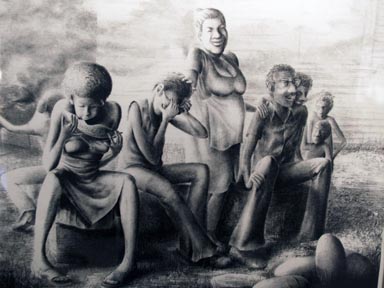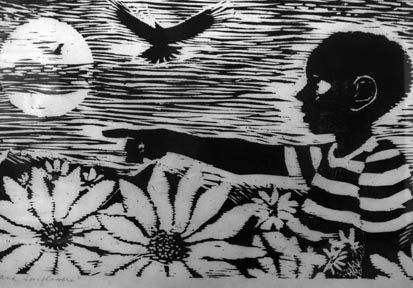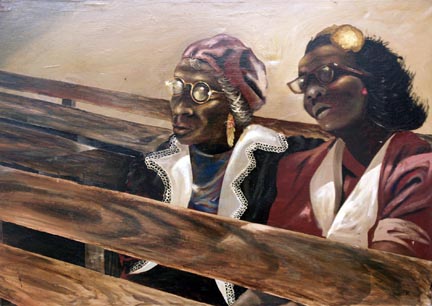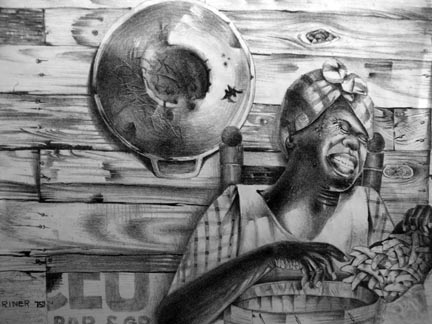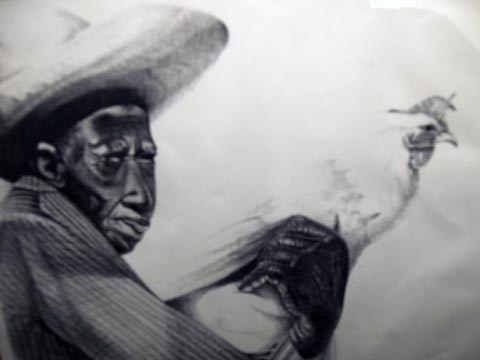The Artistic Legacy of John Biggers
An art exhibit currently on display at Mullins Library celebrates the artistic legacy of a great educator.
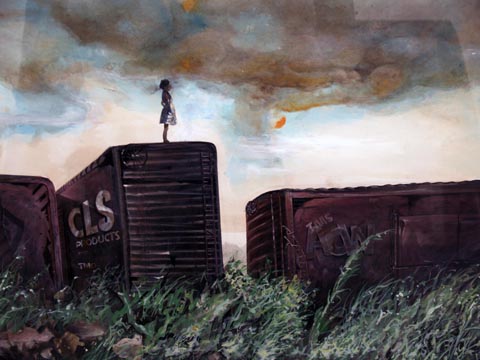
In 1949 North Carolina native John Biggers founded the art department at Texas Southern University in Houston (then called Texas State University for Negroes). For the next 34 years, Biggers nurtured and encouraged the artistic aspirations of his students. In the era of segregation, he urged students to explore their African American heritage and to draw the themes of their art from their own experience.
One of Biggers' field of specialty was printmaking, and the exhibit features many lithographic prints by both Biggers and some of his most successful students, including Charles Criner, Kermit Oliver, and Bertram Samples. The images depict African Americans engaged in various rural and domestic scenes, illustrating the quiet harmony of everyday living. One lithographic print is one of several that Biggers created to illustrate a book of poems by Maya Angelou titled “Our Grandmothers.” In the image, Biggers depicts the customs and traditional dress of African women that captured his imagination during his tours of Africa.
Biggers' influence can be seen in the works of his students. The woodcut “Hazel” by Biggers, which depicts a small girl walking past a sunflower, might be a companion piece to the woodcut by Kermit Oliver, “Boy and Sunflowers.” Charles Criner depicts the tranquil beauty in the faces of African American women in such images as “Mrs. Cook,” “Lady,” and “Church Ladies.” A Criner painting, whimsically titled “East Texas Playground,” depicts a small girl standing atop a railway boxcar, abandoned in a field. She stands tall as she looks out from that height across the prairie, and the viewer can sense her strength and irrepressible spirit.
Biggers' artistic output had no less of an impact on the public spaces of Houston than on his students. During his career, Biggers was commissioned to create 27 public murals. The exhibit features a color reproduction of one of his most famous murals, “The Contribution of Negro Women to American Life and Education,” painted in Houston's Blue Triangle YWCA in 1952. The mural was controversial in its depiction of indomitable African American women who overcome cultural adversity to direct the course of their own and their families' futures.
While at TSU, Biggers initiated a mural program for seniors majoring in art. Texas Southern now boasts 114 senior murals on campus, making it one of the most visually engaging campuses in the United States.
All of the images currently on display in the exhibit are on loan from the private collection of Shirley and Lenthon Clark. The University Libraries are grateful to Mr. and Mrs. Clark for sharing these distinctive and compelling images with the Libraries for the enjoyment of students, faculty, and staff of the University of Arkansas in celebration of Black History Month.
Find more information at http://libraries.uark.edu/info/artexhibit.asp#clark.
(Click thumbnail image to enlarge.)
